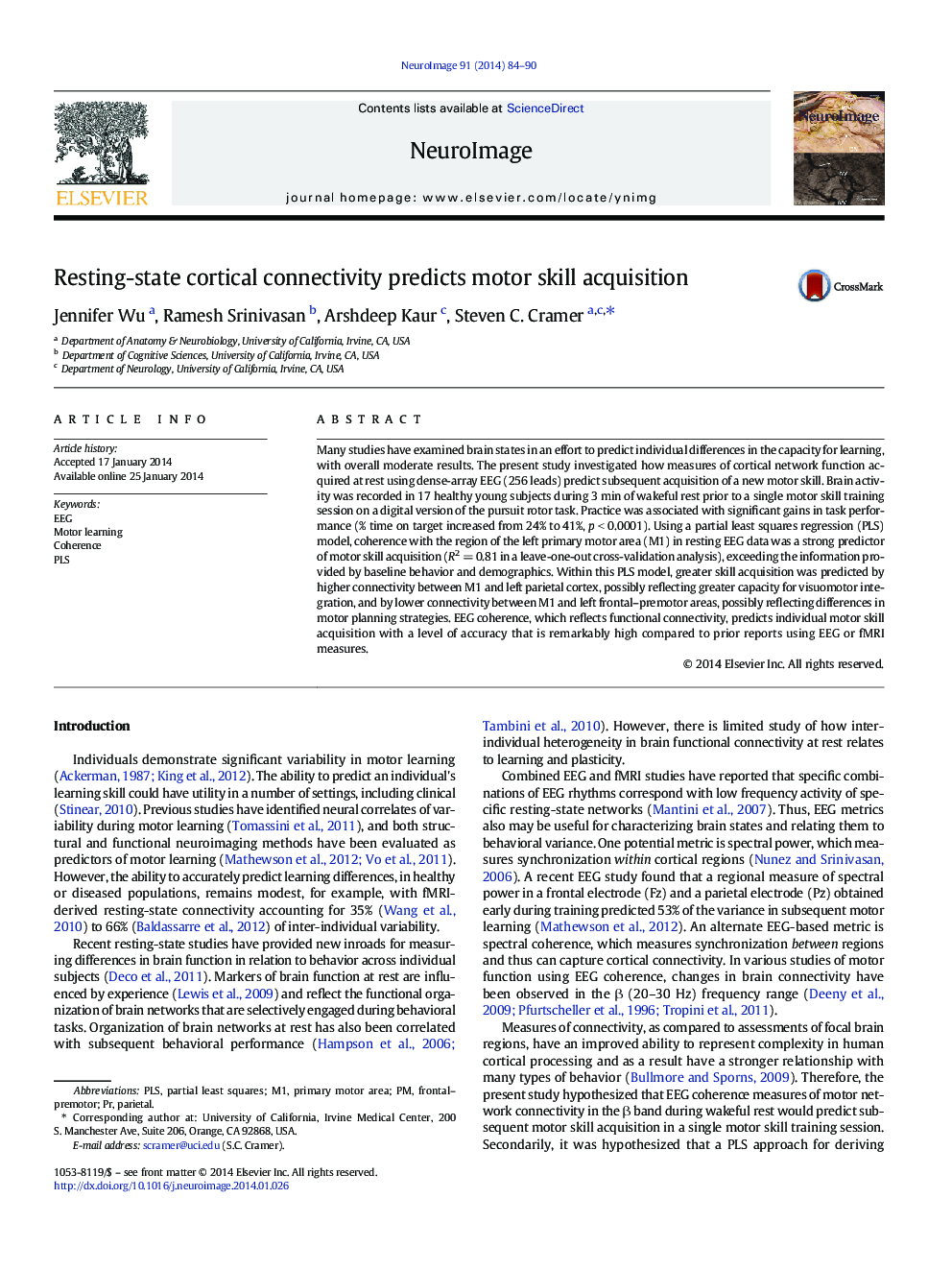| Article ID | Journal | Published Year | Pages | File Type |
|---|---|---|---|---|
| 6027623 | NeuroImage | 2014 | 7 Pages |
Abstract
Many studies have examined brain states in an effort to predict individual differences in the capacity for learning, with overall moderate results. The present study investigated how measures of cortical network function acquired at rest using dense-array EEG (256 leads) predict subsequent acquisition of a new motor skill. Brain activity was recorded in 17 healthy young subjects during 3 min of wakeful rest prior to a single motor skill training session on a digital version of the pursuit rotor task. Practice was associated with significant gains in task performance (% time on target increased from 24% to 41%, p < 0.0001). Using a partial least squares regression (PLS) model, coherence with the region of the left primary motor area (M1) in resting EEG data was a strong predictor of motor skill acquisition (R2 = 0.81 in a leave-one-out cross-validation analysis), exceeding the information provided by baseline behavior and demographics. Within this PLS model, greater skill acquisition was predicted by higher connectivity between M1 and left parietal cortex, possibly reflecting greater capacity for visuomotor integration, and by lower connectivity between M1 and left frontal-premotor areas, possibly reflecting differences in motor planning strategies. EEG coherence, which reflects functional connectivity, predicts individual motor skill acquisition with a level of accuracy that is remarkably high compared to prior reports using EEG or fMRI measures.
Related Topics
Life Sciences
Neuroscience
Cognitive Neuroscience
Authors
Jennifer Wu, Ramesh Srinivasan, Arshdeep Kaur, Steven C. Cramer,
